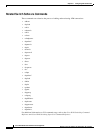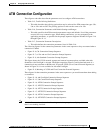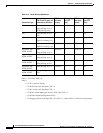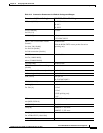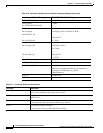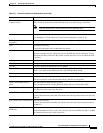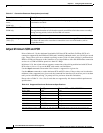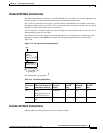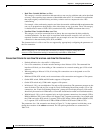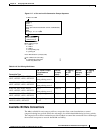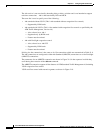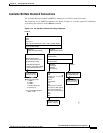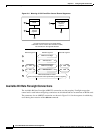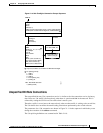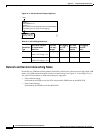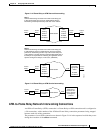
21-30
Cisco BPX 8600 Series Installation and Configuration
Release 9.3.10, Part Number 78-11603-01 Rev. D0, July 2001
Chapter 21 Configuring ATM Connections
ATM Connection Configuration
• Real-Time Variable Bit Rate (rt-Vbr)
This category is used for connections that transmit at a rate varying with time and can be described
as bursty, often requiring large amounts of bandwidth when active. It is intended for applications
that require tightly constrained delay and delay variation such as compressed voice video
conferencing.
For example, video conferencing requires real-time data transfer with bandwidth requirements that
can vary in proportion to the dynamics of the video image at any given time. The rt-Vbr category
is characterized in terms of PCR, SCR (sustained cell rate), and MBS (maximum burst size).
• Non-Real Time Variable Bit Rate (nrt-Vbr)
This category is used for connections that are bursty but not constrained by delay and delay
variation boundaries. For those cells in compliance with the traffic contract, a low cell loss is
expected. Non-time critical data file transfers are an example of an nrt-Vbr connection. A nrt-Vbr
connection is characterized by PCR, SCR, and MBS.
The characteristics of rt-Vbr or nrt-Vbr are supported by appropriately configuring the parameters of
the Vbr connection.
Note When configuring a rt-Vbr connection, the trunk cell routing restriction prompt does not
occur, as rt-Vbr connection routing is automatically restricted to ATM trunks.
Connection Criteria for real-time Vbr and non-real-time Vbr Connections
• Default utilization for voice traffic is 100 percent.
• For rt-Vbr connections, all nodes must be running at least Release 9.2.20. The command line
interface will block you from adding rt-Vbr connections in a network running pre-9.2.20 switch
software
• When upgrading to Release 9.2.20, all existing Vbr connections are re-designated as nrt-Vbr
connections.
• BXM and UXM (IGX switch) cards can terminate rt-Vbr connections and support rt-Vbr queues.
• On the BPX switch, BXM and BNI trunks support rt-Vbr queues
• On the IGX switch only, UXM trunks support rt-Vbr queues.
• In Release 9.2.20, you can add both rt-Vbr and nrt-Vbr connections.The parameter prompts are the
same for both rt-Vbr and nrt-Vbr, except for Trunk Cell Routing Restriction prompt. (For rt-Vbr
connections, the “Trunk Cell Routing Restriction” prompt will not display because rt-Vbr traffic
should only be routed over ATM trunks; rt-Vbr traffic should not be routed over FastPacket trunks.)
• With Release 9.2.20, rt-vbr is supported only on single-segment connections (for example, CPE to
BXM to BXM to CPE). Later releases will support 2 and 3 segment connections, for example with
the UXM card on the IGX switch (2 segment: CPE to IGX feeder UXM to BXM to BXM to CPE)
or (3 segment: CPE to IGX feeder UXM to BXM to BXM to IGX feeder UXM to CPE).
The parameters for a Vbr connection are shown in Figure 21-7 in the sequence in which they occur
during the execution of the addcon command. The Vbr policing definitions are summarized in
Table 21-9.



